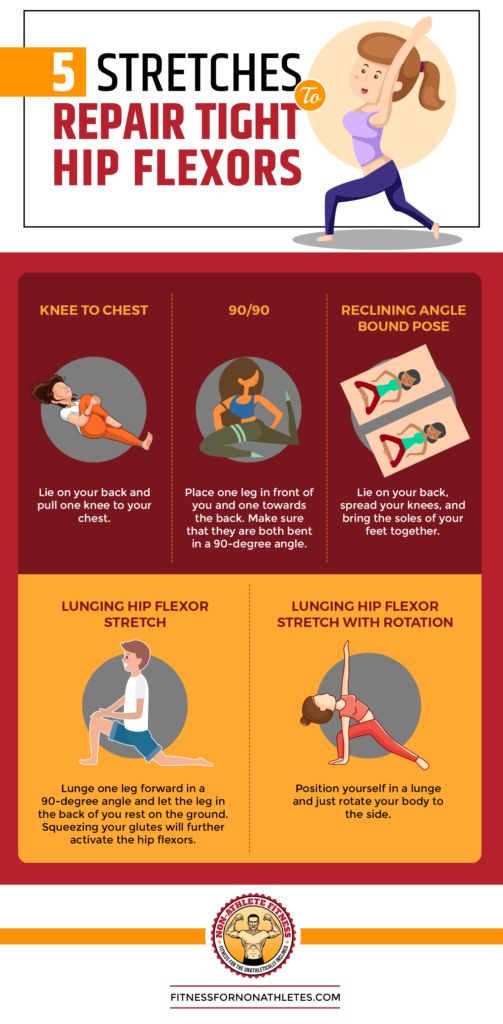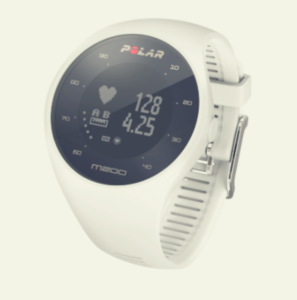It all starts from your core. It is the central link that connects your upper and lower body. That’s why you want to maintain a strong and flexible core. In today’s article, we’ll discuss the problem of tight hip flexors and some of the ways you can loosen them up.
Whether you lead a sedentary life or spend hours pushing your body to its limits at the gym, you may have tight hip flexors.
In fact, most people do. The hip joints are a muscle group that we often ignore until we have developed an injury.
When you experience tightness in this region it signifies that your hip flexors are both weak and not functioning to their fullest capacity. If you don’t maintain flexibility and strength within the hips, you will be more at risk for lower back issues, as well as pain in the neck, and the sacroiliac joints.
Here is what you need to know about tight hip flexors and how you can improve flexibility and resilience in that area.
Why Tight Hip Flexors Are A Problem
If you experience bodily pain predominately within the lower half of your body, whether you consult with a personal trainer, a pain management doctor, or a masseuse, they will all likely direct you to one region of your body – the hip flexors.
Why?
Because the hip flexors are the connection between your pelvis and thighs and are the home of several other key muscles.
So generally, if your hip joints aren’t up to par, many other areas are in trouble as well.
The psoas major and iliacus are its primary components (often referred to as iliopsoas) and it is imperative that this set of muscles be kept strong and flexible as it stabilizes the lower back and support movement (such as walking, running, etc.)
Weakness within the ilipsoas will make it extremely uncomfortable to stand or be active in an upright position.
What Causes Tight Hip Flexors?
Tight hip flexors are caused by a variety of things but some people may just be born with this dilemma.
Leading a sedentary life or working a job that involves sitting for long periods of time can be the cause of this condition.
This area can also become abnormally tight if you have one leg that is shorter than the other, tend to sleep on one side of the body, have bad posture, tend to overuse this muscle group, or have an anterior pelvis tilt (when the front of the pelvis rotates forward while the back rises upward).
No matter the cause, tight hip flexors are correctable.
How To Recognize Tight Hip Flexors
It may not be as easy for you to determine whether or not you have tight hip flexors as they affect multiple regions of the body.
Generally, if you have unexplained pain in the feet, shins, legs, or lower back, you can often trace that discomfort back to the weakness and underdevelopment of the hip flexors.
Limited range of motion especially in the lower body can also be traced back to tight hip flexors.
How To Repair Tight Hip Flexors
Because multiple factors often contribute to tight hip flexors, in order to improve the elasticity in that region you must take multiple approaches.
The fool-proof way to go about it is to both stretch and strengthen the hip joints.
Stand Up
Standing up opposed to sitting down can substantially strengthen the hip flexors.
If you have trouble staying on your feet for more than a half hour, that is a good indication of weak hip flexors.
Try standing as much as you can especially when you have something to distract your mind and ease the discomfort while your joints strengthen (read books, watch television, search the web, etc. while standing).
Train Your Glutes
Your glutes are connected to your hip flexors and by training them you will not only build muscle in the area making your body less prone to injury but you will also activate your hips in the process.
Most gluteal exercises involve the use of the hip flexors and if you have weak glutes, the hips are forced to overcompensate for this lack. This, in turn, can lead to overuse of the hip flexor.
Most squat variations and glute isolation exercises will do the trick
Loosen Your Hamstrings
If you lack mobility in the hamstrings, you probably have the same issue with the hip joints.
If you can’t touch your toes or come pretty close, tight hamstrings play a huge part in the tightness of your hip flexors.
Begin with stretching your hamstrings then follow up with muscle building exercises like Romanian deadlifts, kettlebell swings, and back extensions to gain resilence.
Stretch
Stretching the hip flexor is key to improve its flexibility and keep injuries at bay. Luckily, there are countless stretches that can relieve tightness in the hip flexors no matter how advanced your condition may be.
Types Of Stretches To Repair Hip Flexors
While there are far too many hip flexor stretches to list, here are a few that will help to bring about fast results.
Try performing at least two rounds of each stretch for 30 seconds.
- Knee to Chest– Lie on your back and pull one knee to your chest.
- 90/90– Place one leg in front of you and one towards the back. Make sure that they are both bent in a 90-degree angle.
- Reclining Angle Bound Pose– Lie on your back, spread your knees, and bring the soles of your feet together.
- Lunging Hip Flexor Stretch– Lunge one leg forward in a 90-degree angle and let the leg in the back of you rest on the ground. Squeezing your glutes will further activate the hip flexors.
- Lunging Hip Flexor Stretch With Rotation– Position yourself in a lunge and just rotate your body to the side.

Remember that stretching is one of the most effective ways to combat stiff hip flexors, but you should do so in a slow, progressive manner.
Never force a stretch.
You may injure yourself by overextending your muscles in a position that is unfamiliar to you.
A little discomfort is normal but drastic pain is a red flag that you may be pushing your body too far.
Also, be sure to skip a day between doing heavy stretches until your hip flexors have adjusted to this sudden stimulation.
Tight hip flexors can happen to just about everyone, regardless of your activity level, however, if you sit for long periods of the day, then you may be more prone to experiencing tight hip flexors.
The importance of maintaining a strong core cannot be overstated. If you’re experiencing tight hip flexors, don’t ignore it.
Now It’s Your Turn
Were you aware of the importance of your hip flexors before this article? What are some of the ways you keep a strong core?



